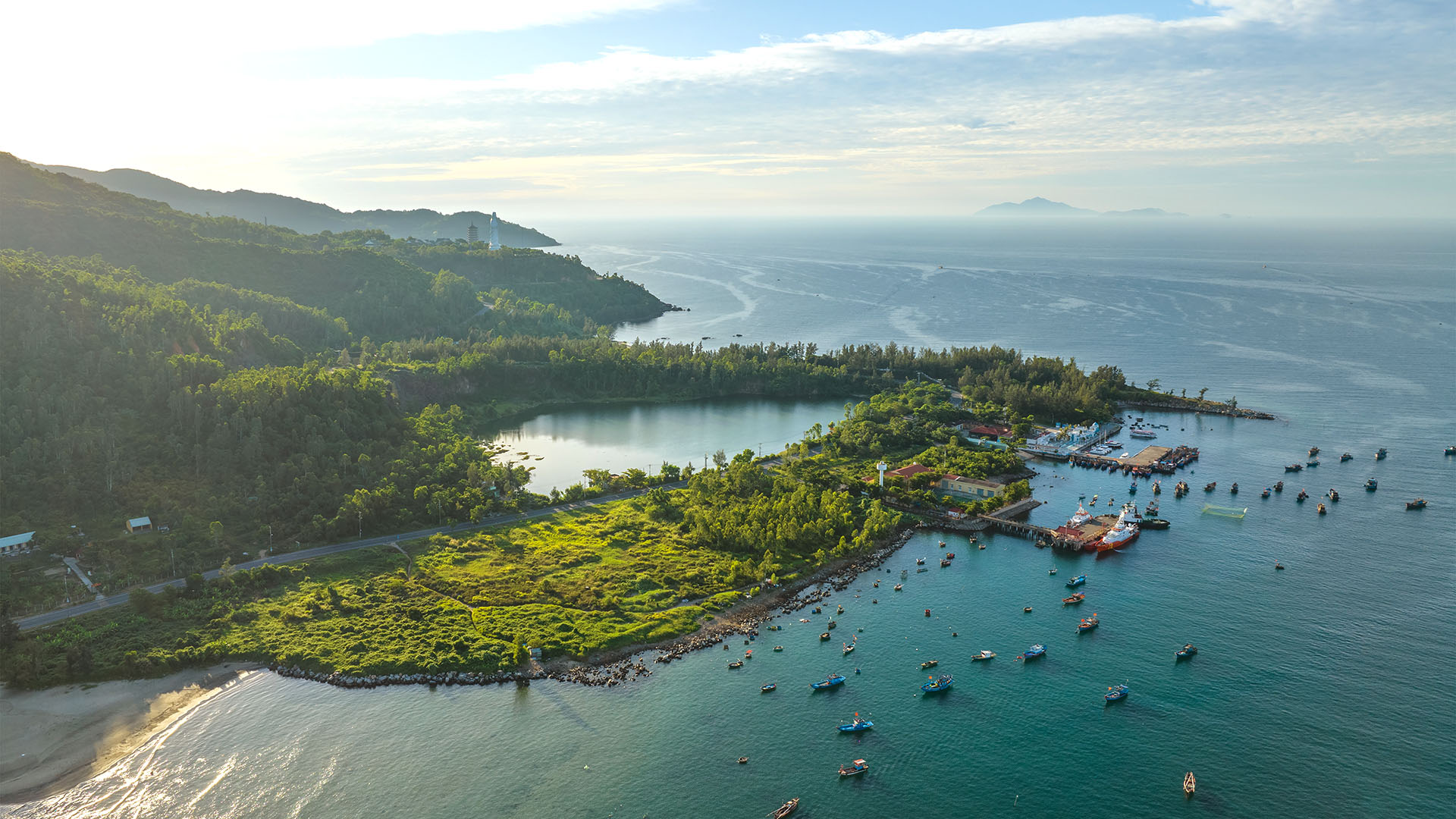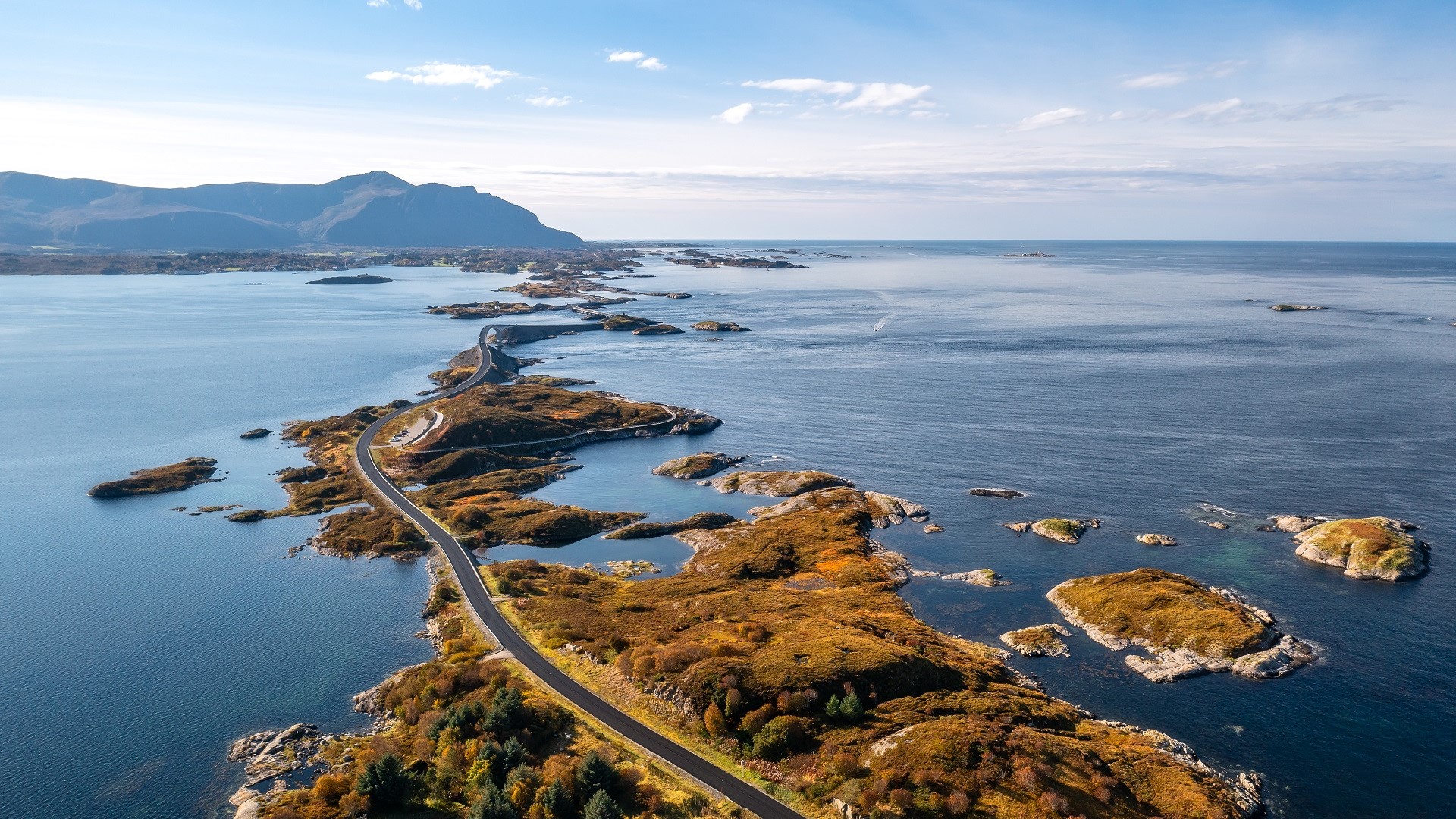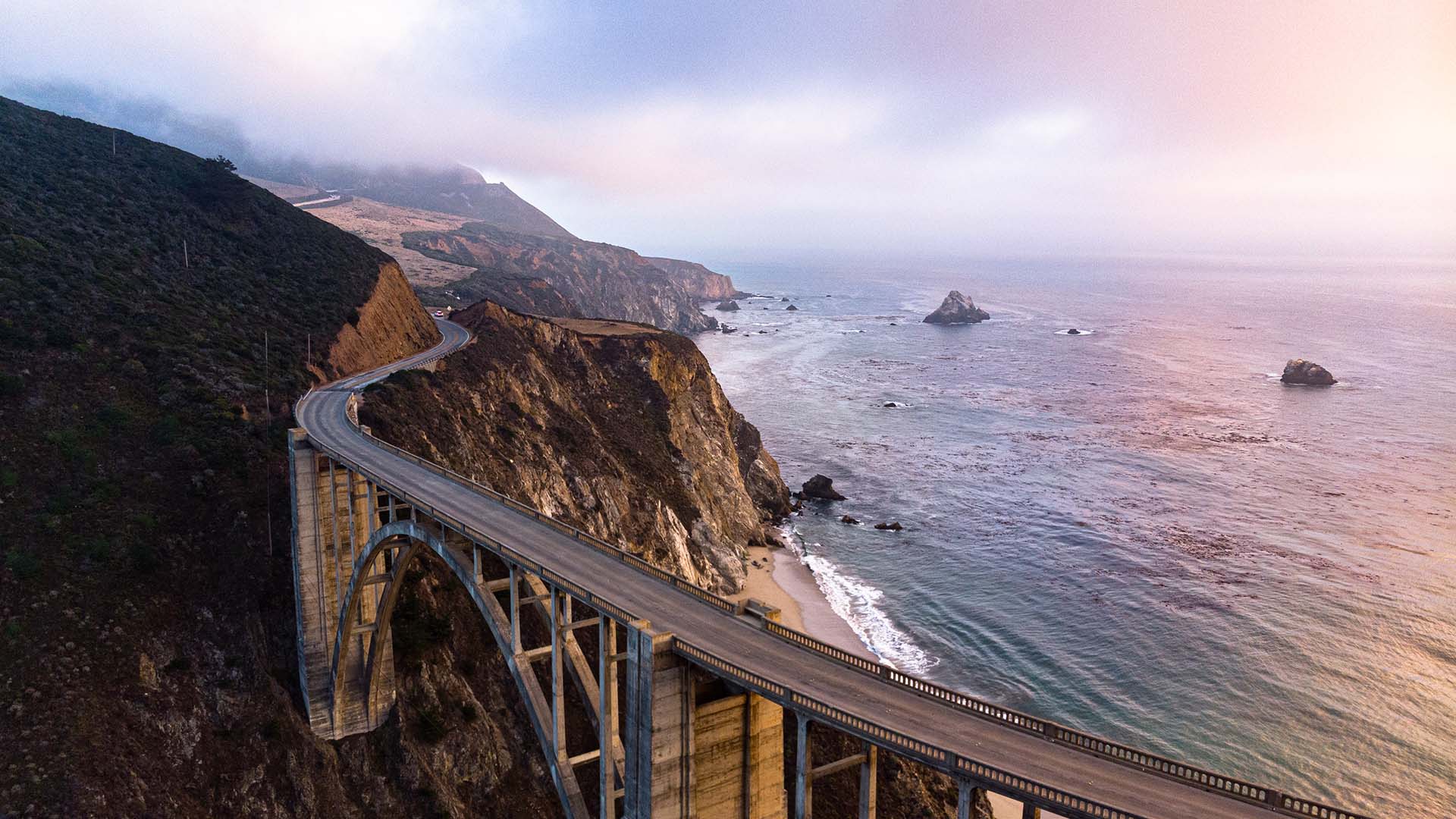
Drive one of the greats: California’s Pacific Coast Highway. (Photo: Getty Images)
Road TripsWhy You’ll Want to Take 5 GOAT (Greatest of All Travel) Road Trips in the U.S.
By Susan B BarnesGetting into the car and taking off on a road trip is a great American tradition, and the U.S. is fortunate to have myriad iconic routes from which to choose. From coast to coast, and even far out into the Pacific Ocean, the wide-open road awaits. Here, we take a look at the must-drive, GOAT road trips in the U.S.
As always, check for travel restrictions and closures before planning your trip.
Pacific Coast Highway
Whether you start your journey along California’s iconic Pacific Coast Highway (PCH) from San Francisco traveling south or from San Diego traveling north, it’s sure to be an epic drive. To really experience the PCH, plan on taking about a week to navigate its 600-plus miles that skirt the coastline, or choose a section to explore in shorter amounts of time.
The many highlights and must-stops along the way from San Francisco and traveling south include the Golden Gate Bridge and Half Moon Bay, the Santa Cruz Boardwalk, McWay Falls and the Bixby Bridge in Big Sur, and the Piedras Blancas Rookery to see elephant seals, Hearst Castle, Pismo Beach and the Monarch Butterfly Grove in San Luis Obispo County on California’s central coast.
As you arrive into Southern California, check out Solvang, a town that is known as Denmark in miniature; the Santa Monica Pier; the Hollywood sign in L.A.; and the San Diego Zoo and Coronado Island in San Diego.
Road to Hana
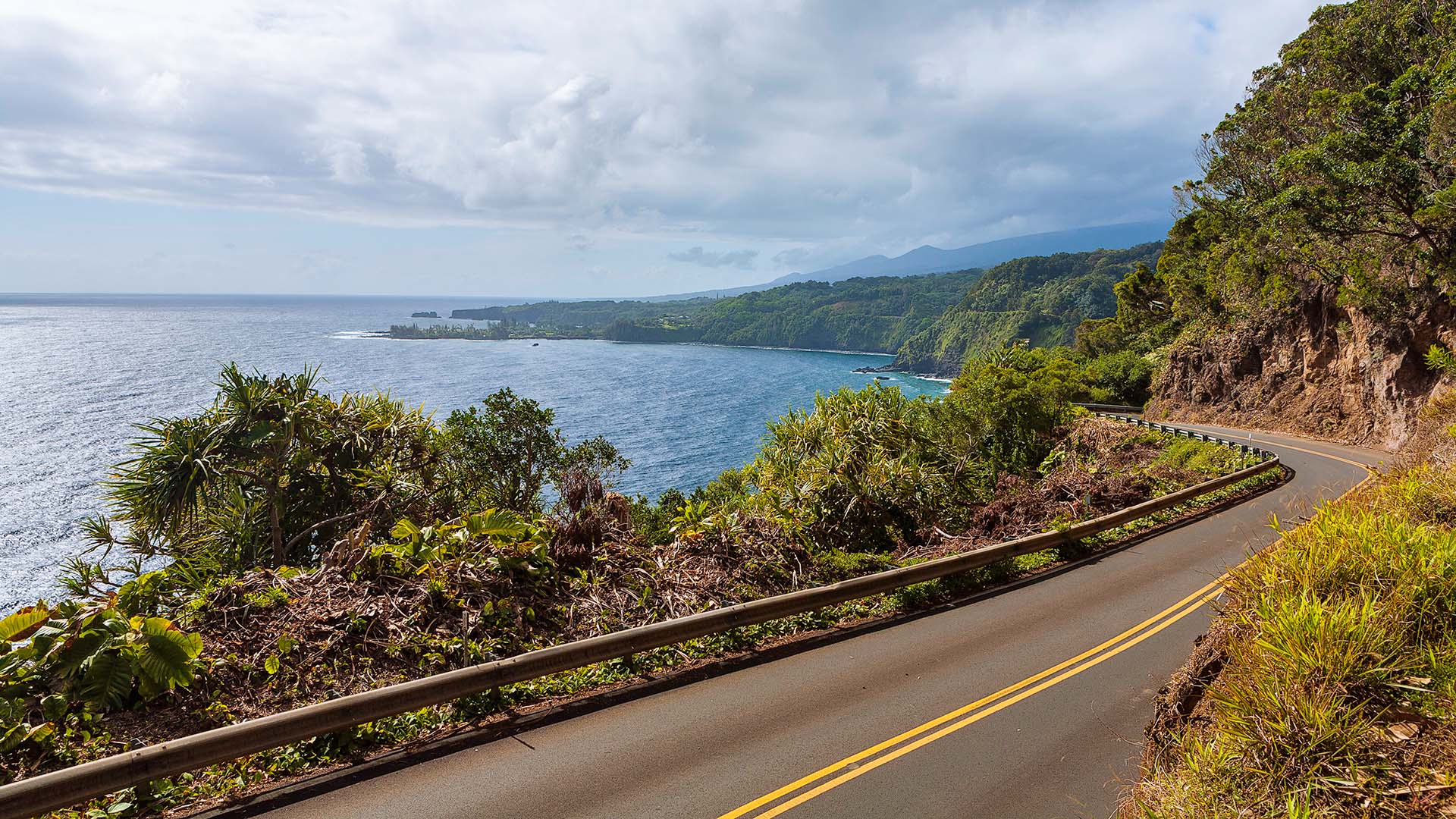
The northeast coastline of the Hawaiian Island of Maui is where you can wind your way along the iconic, 52-mile Road to Hana, with its 620 curves and 59 bridges. When planning your route from Paia, be sure to carve out plenty of time so you can truly enjoy all that the road has to offer.
Highlights and must-stops along the Road to Hana are waterfalls like Twin Falls, Wailua Falls and Hanawi Falls; the Ho’okipa Lookout to watch surfers, windsurfers and kiteboarders do their thing; and Kaumahina State Wayside Park for views of the island’s north coast.
Other points worth a pause include the Garden of Eden and Ke’anae arboretums, Kahanu Garden and Pi’ilanihale Heiau, the largest temple in Hawaii. If you’re still seeking more sights, check out the Hana Lava Tube that was formed nearly 1,000 years ago, the black sand beach at Wai’anapanapa State Park and, of course, the town of Hana itself.
When visiting the Hawaiian Islands, always practice Travel Pono by traveling mindfully and showing your respect for Native Hawaiian culture, local communities and the environment. This includes driving with aloha by parking and hiking only at permitted places, and leaving natural areas as you found them.
Route 66
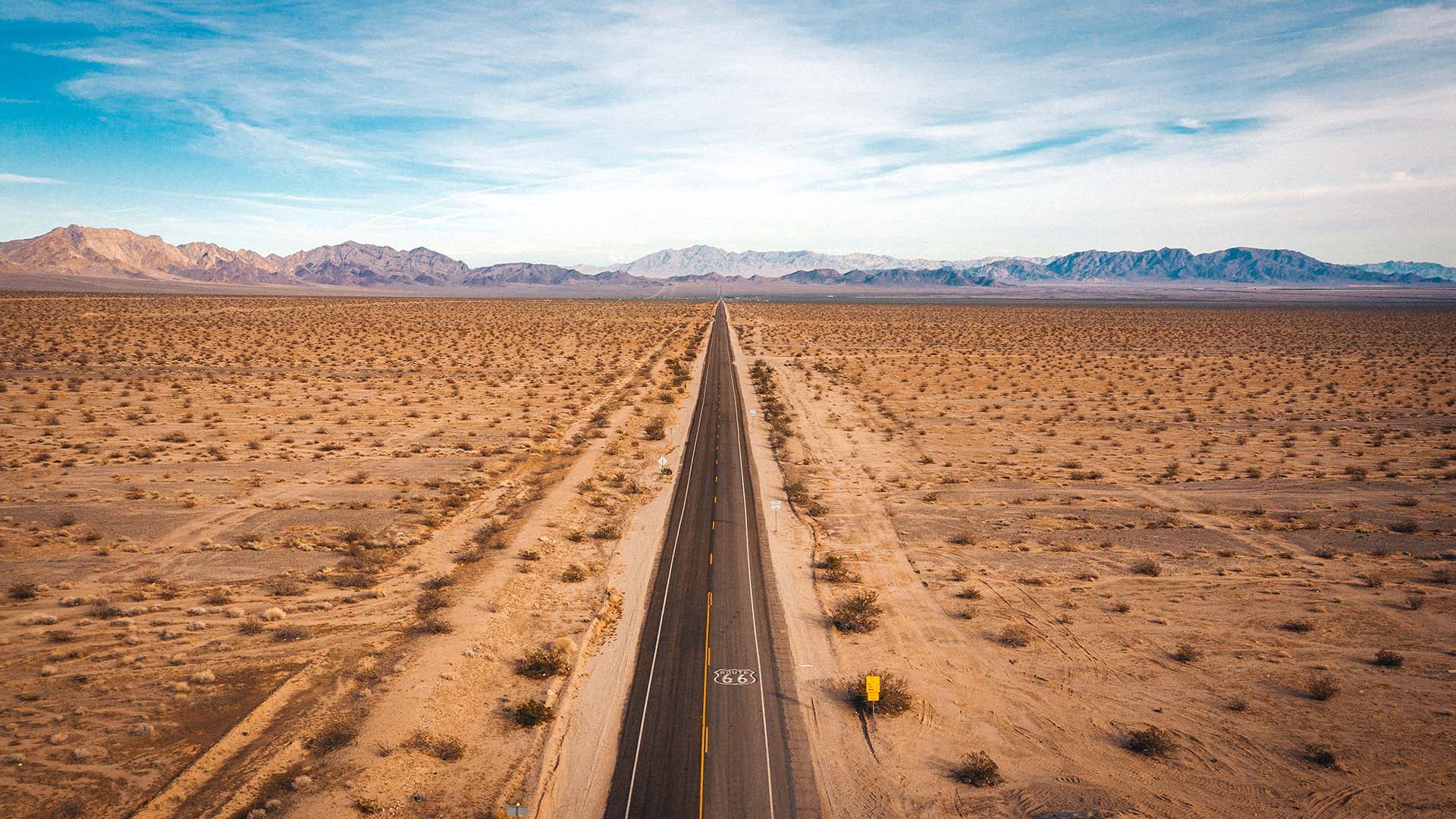
Perhaps the most famous of all American road trip routes is historic Route 66, also known as the “Mother Road,” which begins in Chicago and travels nearly 2,500 miles west through eight states to Los Angeles.
Route 66 was built in the 1920s and ’30s in an effort to provide a trucking route through the Southwest. Though bigger and faster highways have been built since, many road trippers find themselves driving in those same lanes.
Iconic stops and sites that you won’t want to miss to “Get Your Kicks on Route 66″ include the Gemini Giant and Ambler’s Texaco Station in Illinois; the Gateway Arch and Ted Drewes Frozen Custard in St. Louis; Meramec Caverns, a nearly five-mile cave system, in Missouri; the Rainbow Bridge in Kansas for a photo op; and the Blue Whale and Pops diner in Oklahoma.
Make a stop at the Tower Station, Cadillac Ranch, the Midpoint Cafe (exactly 1,139 miles from Chicago and L.A.) and the ghost town of Glenrio in Texas, and the Blue Hole in New Mexico.
Once you reach Arizona, visit the Meteor Crater, Petrified Forest National Park, Two Guns (another ghost town) and Delgadillo’s Snow Cap.
California at last! En route to Santa Monica, stop at yet another ghost town, Calico; Elmer’s Bottle Tree Ranch; and the First Original McDonald’s Museum before reaching the end of the road, literally, at the Santa Monica Pier.
Skyline Drive
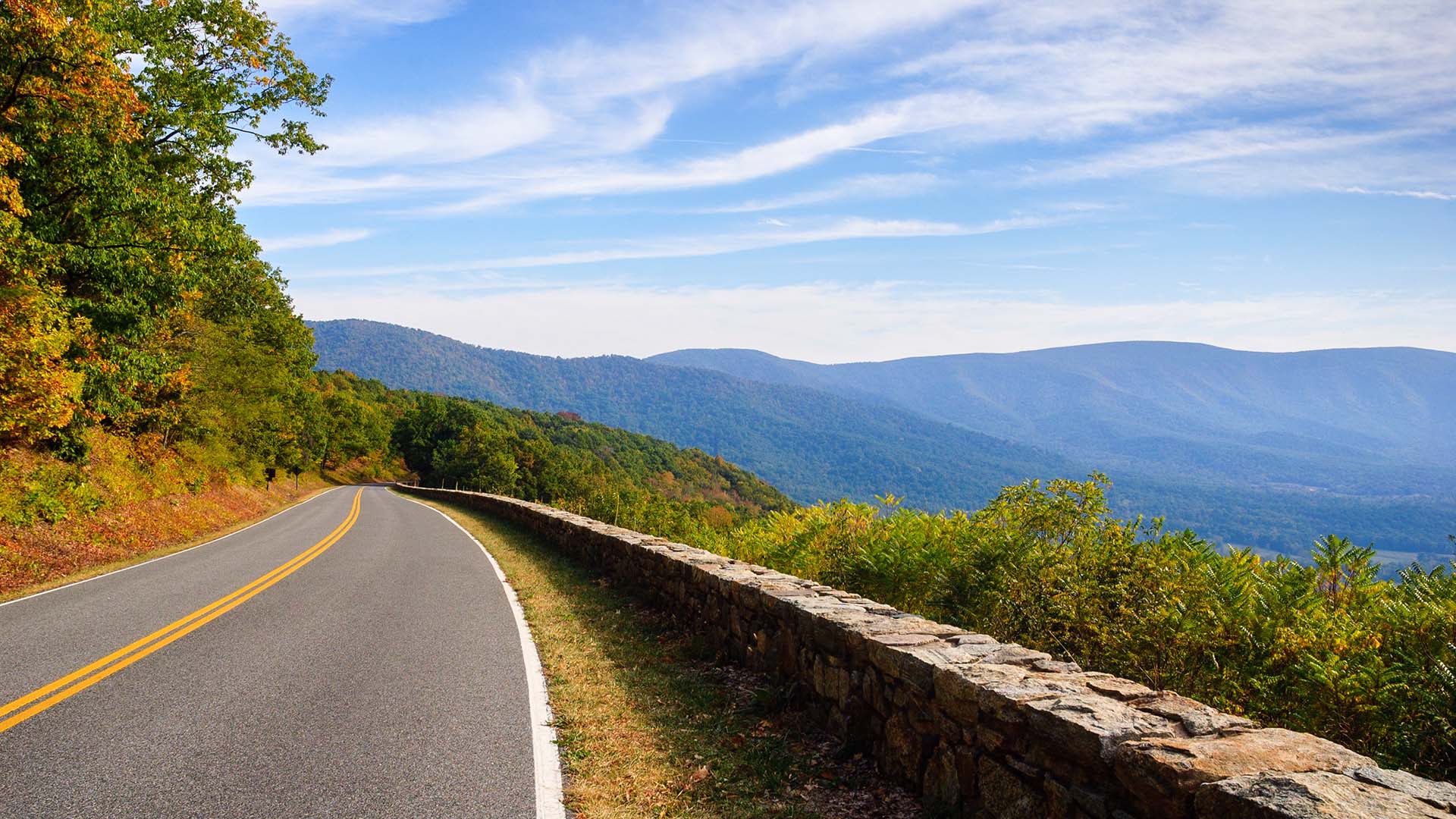
The only public road that travels through Shenandoah National Park in Virginia, Skyline Drive is downright spectacular. Winding 105 miles along the crest of the Blue Ridge Mountains, Skyline Drive usually takes about three hours to travel in its entirety, but why rush it?
Because it’s within a national park, Skyline Drive’s speed limit in the park is 35 mph, so take your time and savor the journey. Of the 75 overlooks at which to stop, consider those at Signal Knob, the Hogback, Buck Hollow, Jewel Hollow, Spitler Knoll, Hazeltop Ridge, Rockytop and Crimora Lake. A lot of these overlooks serve as trailheads, too, if you need to get out and stretch your legs.
One of the best things about Skyline Drive is that the landscapes change with the seasons — with blooming wildflowers in the spring and summer and leaves changing color in the fall — and even with the time of day and how the sunlight falls. Skyline drive is open 24 hours a day, weather permitting, and is terrific for stargazing, too.
Overseas Highway
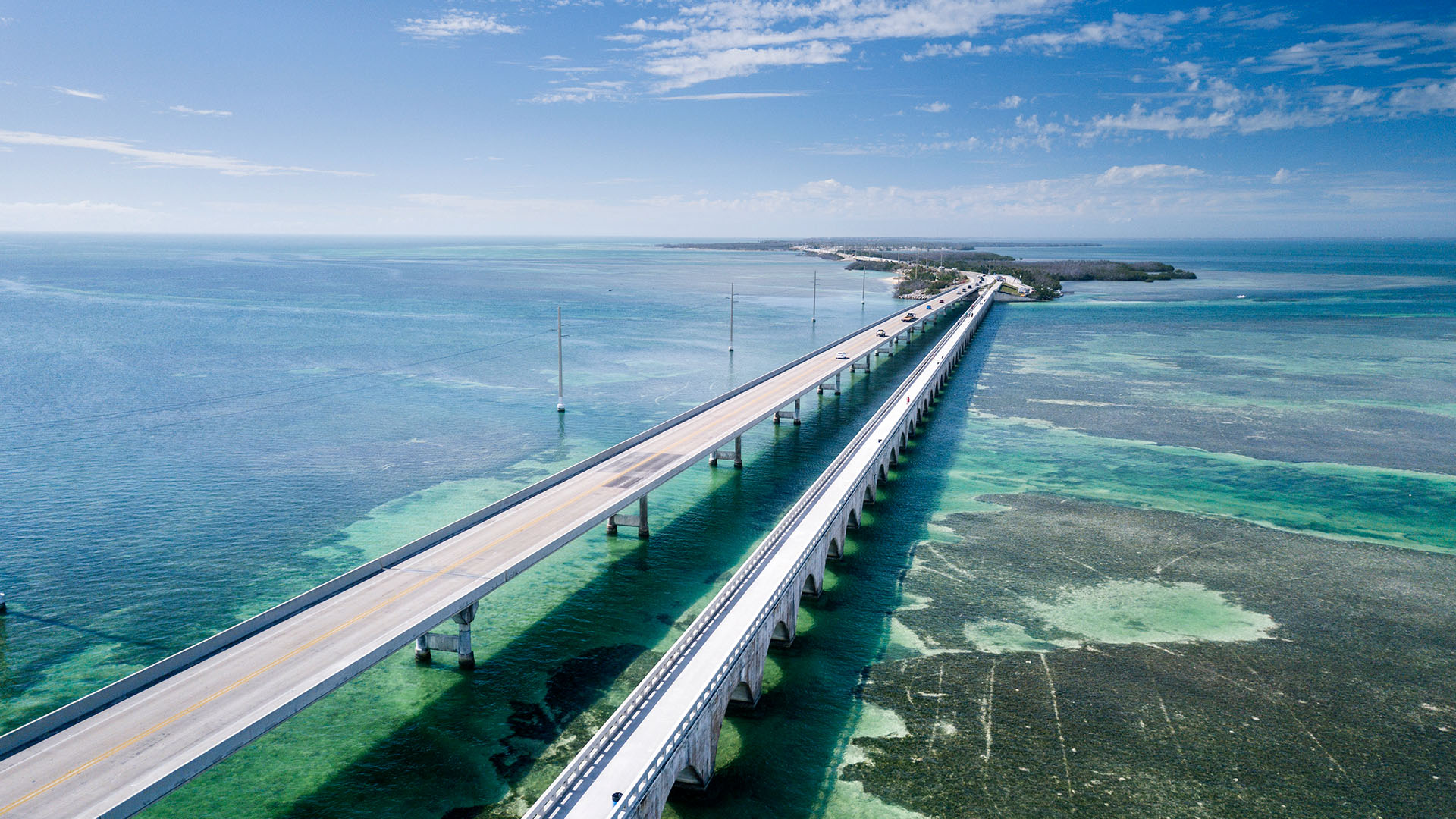
When Henry Flagler built his Overseas Railroad in the Florida Keys from Key Largo to Key West in the early 1900s, he envisioned that the route would be lucrative but likely had no idea just how popular his “folly” would be. When part of the railroad was damaged by a hurricane in the mid-1930s, the route was refitted for cars, and the Overseas Highway was born.
The 113-mile “Highway that Goes to Sea” crosses 42 bridges along the way, with plenty to see and do en route. Whether you’re traveling from Key Largo south to Key West, or vice versa, must-stops include snorkeling at John Pennekamp Coral Reef State Park, feeding the tarpon at Bud N’ Mary’s, visiting rehabilitating sea turtles at the Turtle Hospital, and walking across the Old Seven Mile Bridge, which just reopened to pedestrians.
Once you arrive in Key West, find inspiration at the Hemingway Home and, of course, take advantage of the photo op at the southernmost-point buoy.






